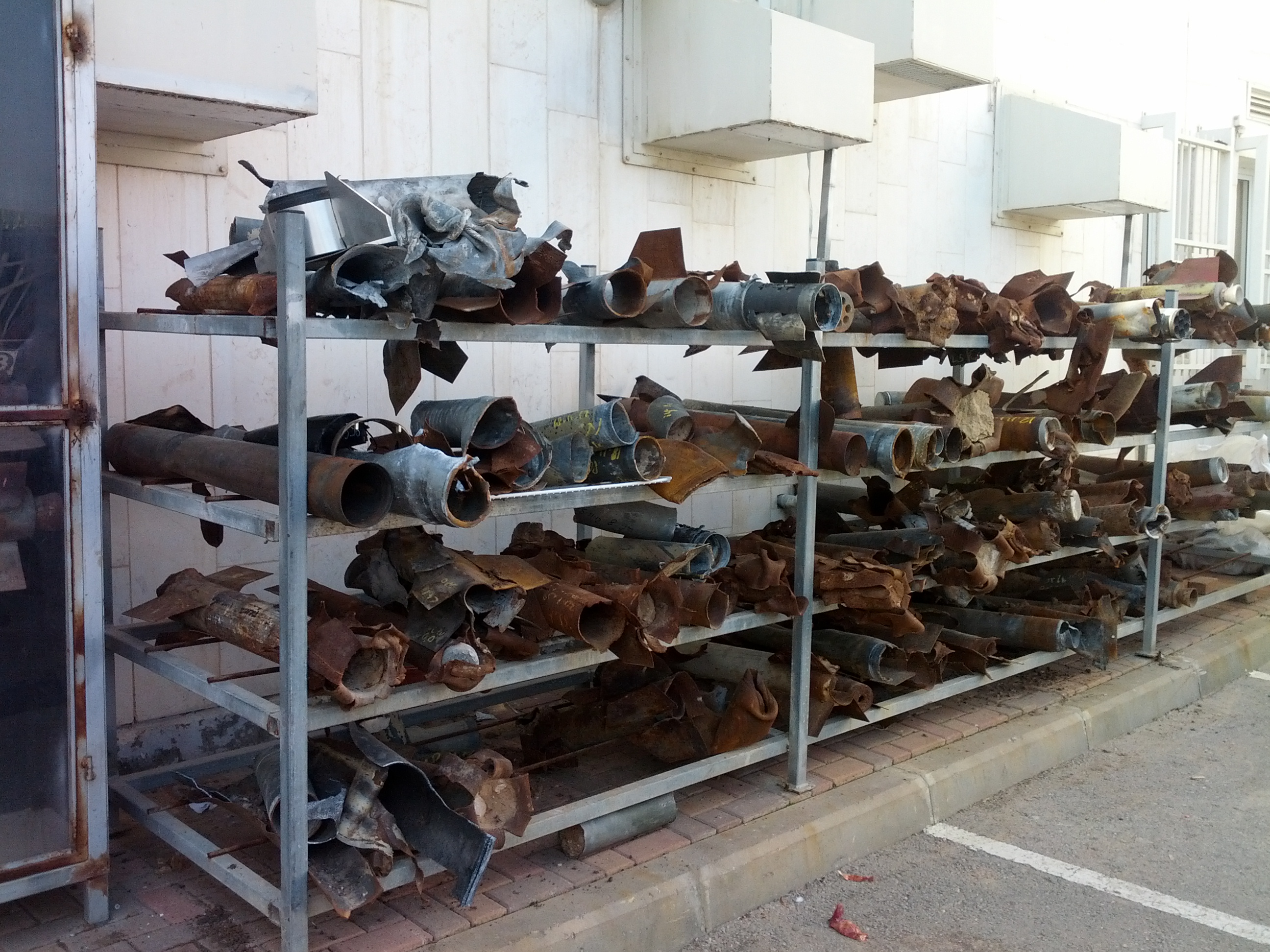Living on the Edge: How daily fears among the citizens of Sderot embody the continuing Israeli-Palestinian conflict

By Caroline Tan
Meet Sderot. Peppered with palm trees, cul-de-sacs and perfectly manicured front yards, Sderot, Israel, seems like another typical suburban neighborhood. There are rows of bushes lining its well-kept streets and a number of SUVs parked along the driveways of Sderot’s quintessentially suburban one-level homes. But something about the town is off: When I visited Sderot over winter break as part of the 15-member U.S. delegation attending an Israel immersion trip sponsored by the American Jewish Committee, I couldn’t help but notice an eerie silence. Despite the storm of rowdy college students who had just arrived in town, nothing in Sderot seemed to move. The town had essentially frozen into a quiet state of being.
The quietness is unsettlingly — eerily beautiful. Perhaps it is an unavoidable result of the town’s geography. Located next to the Palestinian-owned Gaza Strip, Sderot is under the constant threat of rockets fired from Hamas, a Sunni-ruled political party that was deemed a terrorist organization by the United States in 2008. But though Sderot security forces closely guard the Gaza border, they can only do so much: Residents receive just 15 seconds of “Red Color” warning to find a bomb shelter when an incoming rocket approaches the city. And since these rockets can appear at any time, the city is littered these miniature fortresses, which have been built in every household, school, public park and government building.

As we drive through Sderot, I can count the bomb shelters tucked away in every driveway, sitting as a representation of the quiet fear the city faces every day. Today, we are meeting Kobi Harush, Sderot’s security chief, to hear his take on Sderot’s unique security situation. We drive through the suburban neighborhood until we come across a security compound. There’s a police car sitting outside and a glass case and metal rack filled with pieces of rockets and shrapnel.
When we get out of the car, we meet Mr. Harush himself. He is a tough man with short hair and a sinewy build. He looks weary and speaks entirely in Hebrew, pausing once in a while to let our tour guide translate his thoughts to the English-speaking group. As Mr. Harush discusses Sderot’s security system and what it’s like to grow up in fear, he picks up a piece of shrapnel recovered from a recent rocket, inviting us to touch the weapon ourselves. It’s heavy and threatening. We each take turns lifting the pieces of rockets — some of which Mr. Harush says were fired from Hamas — and marvel at the immense yet cold danger that emanates from every piece. Each one sits silent, menacing, made even more terrifying by the rows of shrapnel stacked neatly on four levels that cover an entire wall of the security building.
Sderot’s situation is emblematic of ongoing Israeli-Palestinian tensions that still exist today. Throughout my trip, I was reminded of these divisions by the bright red signs written in Hebrew, Arabic and English that reminded Israelis that certain roads “lead to [a] Palestinian village, the entrance for Israeli citizens is dangerous.” We could easily tell which cars were driven by Israelis and which by Palestinians: Israelis had yellow license plates, Palestinians, green and white.

Ever since Israel was carved out of Palestine, the two sides have been forced to live side-by-side, albeit not quietly. For years, the question of whether Israel should even exist as a state remained uncertain, as Arab nations bitterly refused to recognize Israel, which had been created by Western powers to serve as a homeland for the Jewish people. After the Six Days War in 1967, though, it became clear that Israel was here to stay, and now the question of peaceful coexistence has become the focal point of the conflict.
The Israeli-Palestinian question is still a complicated one. Though both sides now nominally support the Two-State Solution, territorial disputes and security concerns continue to throw a shadow over the solution. Israel remains concerned that a newly-formed Palestinian state could fall into the hands of Hamas or other extremist groups, and Palestinians continue to suffer discrimination and human rights abuses at the hands of both governments, according to the 2013 World Report released February by Human Rights Watch. Just last November, a few weeks before my scheduled departure, Hamas created a minor stir when it successfully launched a rocket into Tel Aviv airspace. Nobody was harmed, but the issue served as a stark reminder that ongoing tensions continue to play out in the Middle East. That, coupled with continued frustration over the Western involvement that carved out Israel in the first place, and you get a still-controversial territory that is still recovering from colonial influences.

In many ways, Israel is a combination of opposing forces — on the one hand, its environment presents a pastoral and peaceful beauty marked by sheepherders, the Sea of Galilee, and miles of grassy plains. On the other, its history is marked by superpower influences, carved out of conflict and upheld by the ghosts of that relationship. Throughout all this, Sderot sits silently, a reminder of that conflict and its repercussions on the daily lives of Israeli and Palestinian citizens alike.
Caroline Tan ‘14 is a double economics and history major in Berkeley College. She can be reached at caroline.tan@yale.edu.